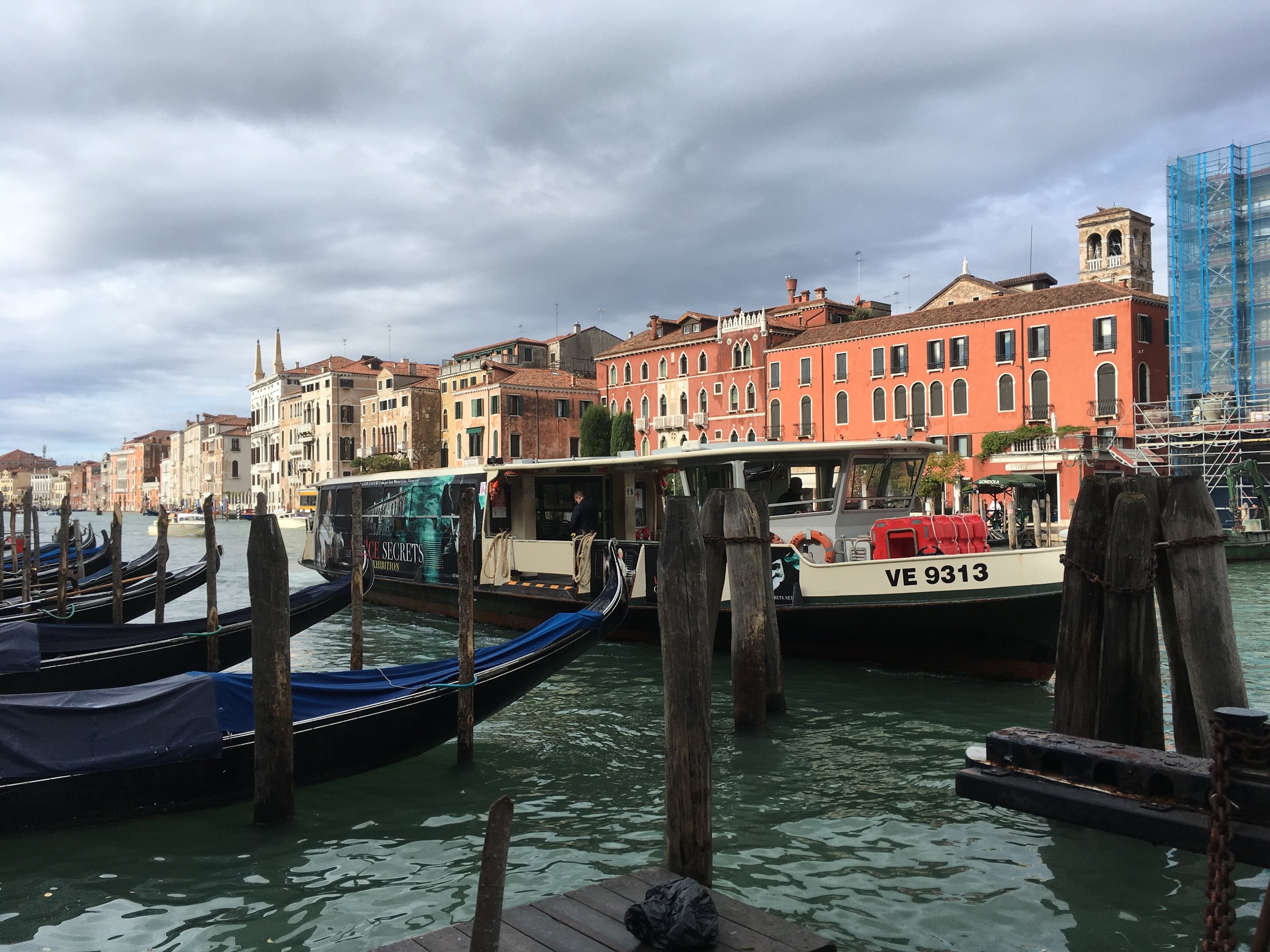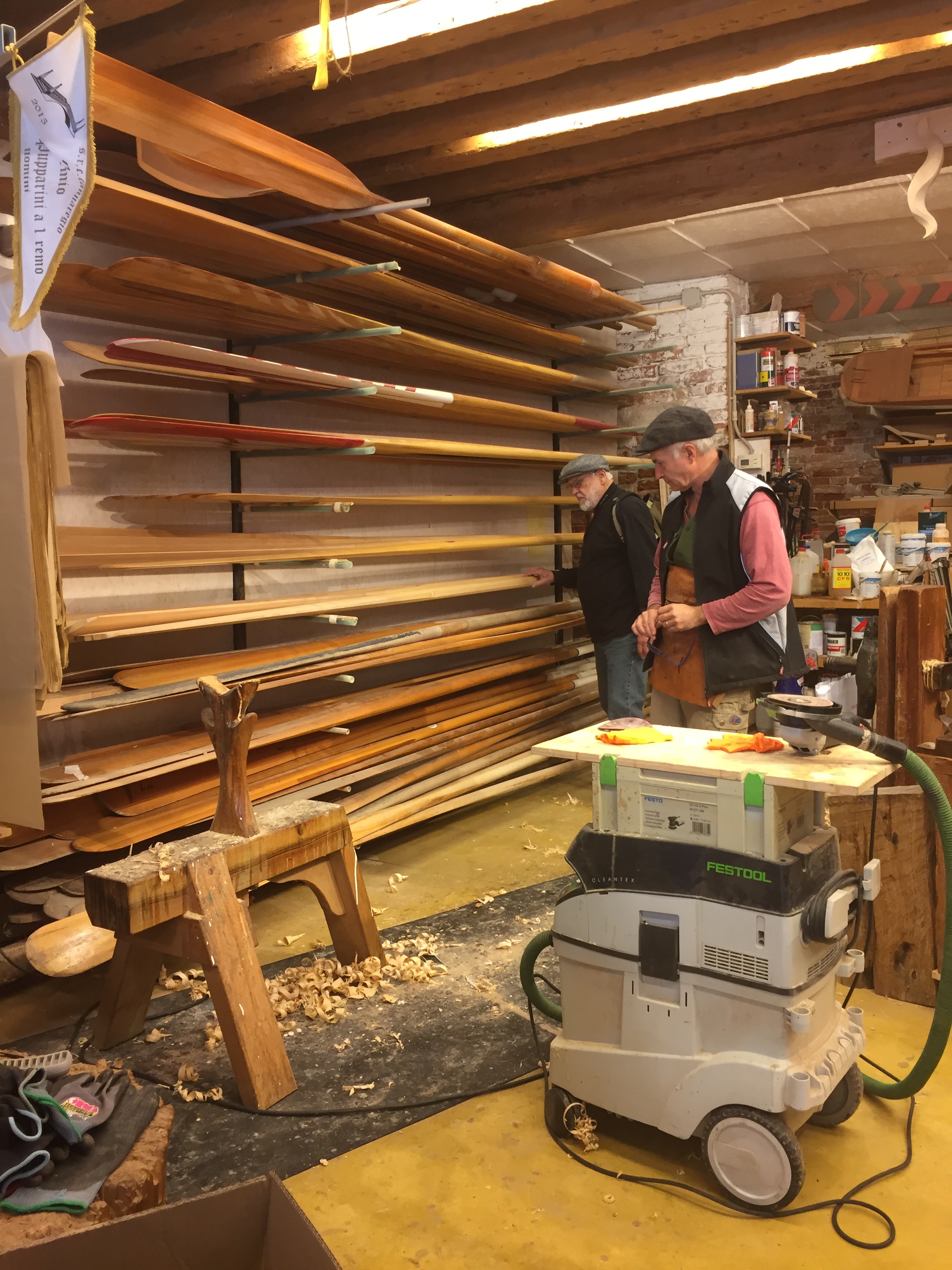Our three year in-the-making trip has come to an end but the memories will continue. Traveling for Lew and Deb often means water and lots of it. Some of that water was in its accustomed place and some was not. Travel around water also means boats, lots of them. In line with our love of boats on Washington Island, on this trip, we found similarities and small world stories, too!
Photo: Lew Clarke
We started off in Italy in Venice - an island itself with canals to boot.
Photo: Deb Wuellner-Clarke
Venice and its canals require quite an array of vessels. Water taxis like the one above are vintage - handsome, sleek, often quite long. They can move along and they do - whether the weather is rainy or sunny. For us, the weather and a mix of unique elements was not necessarily kind.
Photo: Deb Wuellner-Clarke
But we are used to weather challenges. What is a bit of rain? We can manage. As we arrived we found that pouring rain does not stop the pace of traffic on the water. Proximity in space doesn’t either. Much like my experience sailing, two boats on the water constitute a race whether one is in Venice or Lake Michigan. Currents and white caps do occur no matter the amount of space provided and some of the Grand Canal isn’t that wide.
Photo: Lew Clarke
The Vaporetto warerbus operated by Azienda del Consorzio Transporti Venezeano (ACTV) is the main travel link within the canal system. Regular routes with maintained stops can be found on the Internet. The pilots were great. It wasn't hard to trust them after our positive experience with the Ferry Captains on the Washington Island Ferry Line.
Photo: Deb Wuellner-Clarke
However, there was one coincidence that was kind of a small world type of experience. From Marco Polo airport, we drove through Marghera to the boat terminal. An industrial port, there was much activity.
Photo: Deb Wuellner-Clarke
When we passed by this logo, I did a double take. The Fincantieri shipyard spans the world but Its operation in Sturgeon Bay and Marinette is a far more recent addition. The firm started in 1959 in Italy and its home is still there in Trieste. Several yards continue to be maintained in Italy.
Photo: Deb Wuellner-Clarke
The shipyard in Marghera/Venice builds luxury cruise ships among other assignments. I did find this plant was putting the finishing touches on Holland America’s newest addition, MS Nieuw Statendam. The ship has since been turned over to the ship line. https://www.hollandamerica.com/blog/ships/ms-nieuw-statendam/
Photo: Deb Wuellner-Clarke
But I digress and there is much to cover. The other element we found in Venice? Water, it was all over. Sometimes out of its boundaries. What people rely on in Venice is an app on tides. There is also an agency that monitors the levels activating a multilevel siren system when The forecasted levels become threatening. People are notified through texts or telephone. While there is often a problem with Acqua Alta or “High Water” during the Winter months, in recent years the days have increased from what was 30 to 35 days to more like a 100 days per year.
Photo: Deb Wuellner-Clarke
The Lagoon adjacent to Venice is effected by high tides daily - every six hours - hence the locals routinely check that app. But last month the combination of the tides, a south wind (scirrocco) and a seiche from the Adriatic Sea caused an exceptional situation which is happening more frequently. The tide comes into the lagoon but fails to go out and then a second tide come in. It takes a while for things to come down, but it did! What an adventure!
Photo: Deb Wuellner-Clarke
About half the time we were there, the water behaved itself. At the same time, transportation was challenged and the canvas covers for the gondolas and work boats were never completely out of sight.
Photo: Deb Wuellner-Clarke
Where we use cars and trucks, basic chores take place on the canals. Here the hotel laundry is collected and distributed. Different hotels have different colored sacks.
Photo: Deb Wuellner-Clarke
Photo: Lew Clarke
While a ride in a gondola did not appeal to me, I was fascinated watching how the steering was accomplished.
Photo: Deb Wuellner-Clarke
On one of our days in Venice we were to see the Peggy Guggenheim Collection located on the Grand Canal. On our way there, we found a stop we could not pass up. If you are visiting Venice, you can see fórcole being made at Saverio Pastor's workshop on the Fondamenta Soranzo.
Photo: Lew Clarke
The forcola is the unmistakable oarpost or rowlock used in Venetian rowing. It exists in a wide range of shapes, depending on the kind of boat, on the rowing position of the oarsman and also on its use: work, pastime or regatta.
Photo: Deb Wuellner-Clarke
The chosen wood diameter has to measure 60 cm or more. The wood is accurately selected, cut into quarters, then stripped of its bark and left to season for at least 3 years.
Photo: Deb Wuellner-Clarke
The forcola is cut and shaped to measure for each oarsman. It is preferably cut out of a natural walnut trunk, while less frequently cherry, pear and maple wood are used.
Photo: Deb Wuellner-Clarke
After the forcola is sketched on the quarter, the shaping work begins using a bandsaw and afterwards gets on to its entirely manual phase, during which the artisan' skills and competence are expressed in the design selection, bestowing original and unique shapes to each item.
Photo: Deb Wuellner-Clarke
Each piece continues to be individually made to the height and expectation of the work it is expected to do. Often the pieces carry original carving denoting the person for whom they are designed.
Photo: Deb Wuellner-Clarke
The artist does sign his work.
Photo: Deb Wuellner-Clarke
Another similarity to our commercial boating? The need for rules. It’s universal. If only the water would follow such rules!
Photo: Deb Wuellner-Clarke
Enough for now. The trip was expansive but Venice with its water-based life was worth its own post. It is good to be back. Time for challenges on the home front.
Til next time .....






















